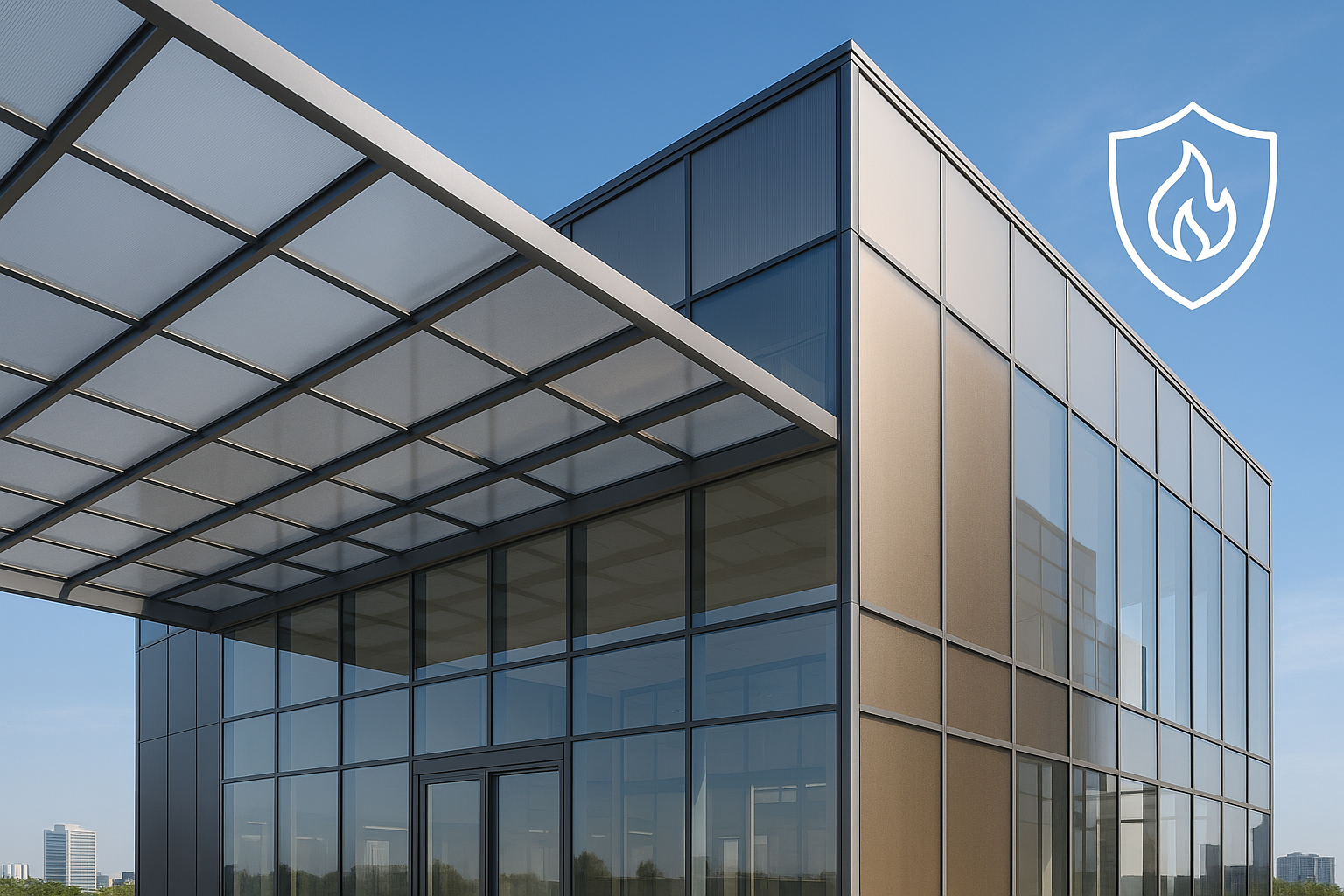Choosing the right polycarbonate sheet color is one of the most effective ways to control heat and daylight in modern architectural projects. In India’s hot and sunny climate, builders and homeowners often struggle to maintain brightness without overheating spaces. The right tint of polycarbonate sheet—like opal, grey, or solar-smart variants—can make your space cooler, brighter, and more energy-efficient.
Why Color Choice Matters in Polycarbonate Sheets
Unlike traditional glass or metal roofing, polycarbonate roofing sheets allow designers to tune both visible light transmission (VLT) and solar heat gain coefficient (SHGC).
Clear sheets transmit up to 90% visible light but also pass the most heat.
Tinted sheets—like opal or solar ice—reflect infrared rays while still allowing pleasant daylight.
This balance is crucial for terrace pergolas, skylights, atriums, and facade panels where comfort and aesthetics go hand in hand.
Top Colours for Heat Reduction and Natural Light
1. Opal (Translucent White) – The All-Round Performer
The opal polycarbonate sheet is widely preferred for Indian homes and villas. It diffuses sunlight evenly, reducing glare and hot spots while reflecting a portion of solar energy.
Light Transmission: ~45–60% (ideal for pergolas and skylights)
Heat Reflection: High
Best For: Outdoor patios, skylights, open verandas, and pergola roofing
Opal sheets are the go-to choice for architects seeking “cool daylight” — bright, soft, and energy-efficient.
2. Light Grey or “Solar Ice” – Subtle Shade, Serious Comfort
Light grey or solar ice polycarbonate sheets deliver a sleek, modern look while significantly reducing glare. They absorb part of the visible spectrum but block much of the infrared heat.
Light Transmission: ~35–50%
Heat Reflection: Moderate to High
Best For: South-facing pergolas, commercial façades, high-sun exposure areas
Perfect when you want a shaded, cooler zone without darkening the environment.
3. Solar Smart or IR-Reflective Tints – The High-Tech Choice
Specialty solar smart polycarbonate sheets integrate infrared-blocking additives that allow visible light while rejecting IR radiation. Available in tints like solar green or blue, they deliver both performance and style.
Light Transmission: 40–55%
Infrared Rejection: Up to 50%
Best For: Premium villas, office atriums, airports, and commercial glazing
Combines architectural aesthetics with thermal performance — perfect for eco-smart designs.
Colours to Use with Caution
| Colour | Pros | Cons |
|---|---|---|
| Clear | Maximum daylight | Allows maximum heat; greenhouse effect |
| Bronze / Dark Tints | Good shade, glare control | Absorbs solar heat → warmer under roof |
Key Factors for Choosing the Right Polycarbonate Tint
Light Transmission vs Heat Transmission
More visible light often means more heat unless infrared reflection is added.
(Example: Opal sheet g-value 0.33 vs Clear sheet 0.39 — 15% cooler)Thickness & Type (Multiwall vs Solid)
Thicker and multiwall polycarbonate sheets have air pockets that improve insulation.Orientation & Site Conditions
South-facing → Opal or IR-reflective
Shaded / North-facing → Clear or light bronze acceptable
Surface Coating & UV Layer
Always choose UV-protected roofing sheets to prevent yellowing and prolong lifespan.
Practical Tips for Indian Homes & Villas
Use opal or grey sheets for pergolas and skylights to balance heat and brightness.
In tropical cities (Delhi, Mumbai, Hyderabad, Chennai), choose IR-reflective or solar-smart variants for better thermal comfort.
Ensure proper ventilation gaps under roofing to avoid trapped heat.
Verify manufacturer data for VLT, SHGC, and IR reflection percentage before purchase.
Conclusion
In India’s climate, the best polycarbonate sheet colours are those that reduce heat without compromising light — opal, light grey, and solar smart tints lead the way. By understanding how colour, coating, and construction interact, you can design spaces that feel open, bright, and thermally comfortable all year round.
Whether it’s for pergolas, skylights, or facades, selecting the right tint turns polycarbonate from just a material into a performance solution — helping architects and homeowners build spaces that are light, strong, and smart.






